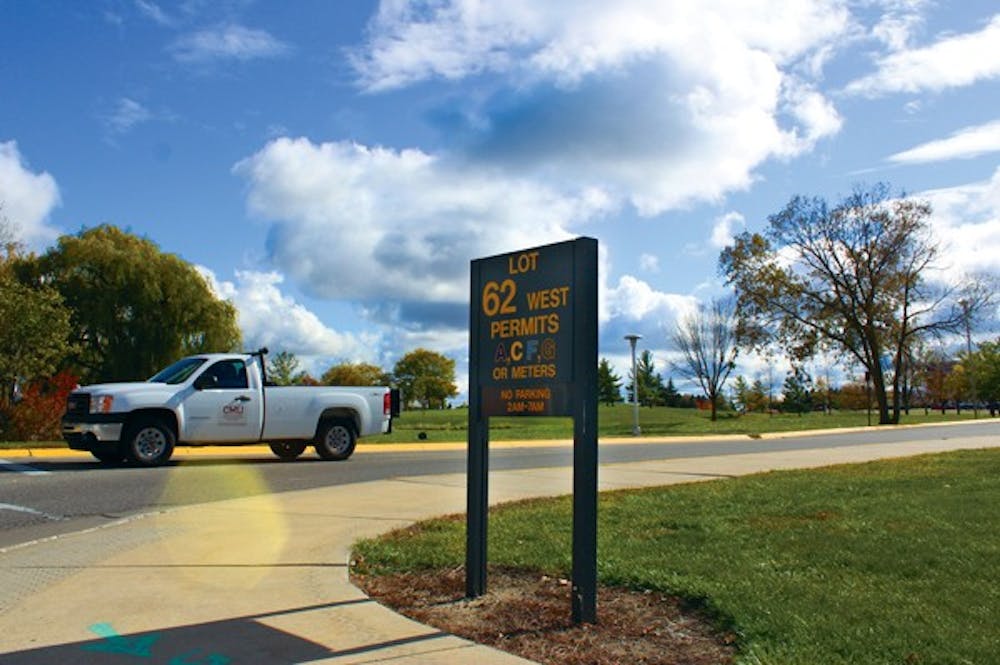Danger zones: Parking lots a prime location for majority of car crashes
Cutting across campus by car, Kristine Price is well aware of the danger she faces behind the wheel.
Last month, she was in a traffic accident off campus while heading north at the intersection of Preston and Mission streets. Bobbling a cellphone, Price and her friend were quickly taken unaware by an oncoming vehicle. Her 2002 Ford Focus was totaled in the accident, leaving a pricey reminder of the importance of awareness while driving.
"My friend was like, 'Where's my phone, where's my phone?' It was in my lap, but I didn't register that until I got out of the car," Price said. "I was not worried about her phone. I didn't even know how it got in my lap."
According to data provided by the CMU Police Department, vehicle accidents in parking lots account for close to 62 percent of auto incidents at CMU. The number of injury-related accidents over the last six years have only accounted for 4.4 percent of all accidents on campus.
Lot 22, the designated commuter parking lot between the Towers Residential Halls and Pearce Hall, has accumulated the most property damage accidents over the past six years. It followed closely by the East and West Campus roads, while injury-related accidents are most common on Broomfield Road.
Preston and Washington streets top the list of roads where property damage accidents occur. The two streets typically find high traffic volume, as the Charles V. Park Library and Bovee University Center are nearby.
CMU Police Chief Bill Yeagley was wary of larger concentrations of drivers in Lot 22. He said students in classes at the nearby Anspach and Pearce halls make up a large number of pedestrians and drivers.
"You can see it's the largest," Yeagley said of Lot 22. "It really receives the most activity. It's a volume usage issue. That is a high-demand commuter lot that gets lots of vehicles coming and going."
Yeagley advised on-campus drivers to be more alert when entering the lot. He said personal awareness is a driver's best tool to avoid accidents.
"Knowing you're coming into an area of high traffic, you slow down," Yeagley said. "Look long, drive defensively. Be aware that you're entering an area where there is a higher likelihood of an accident."
To prevent accidents in CMU's largest parking lot, Yeagley said CMUPD built several stop signs. Yeagley also posts traffic control officers in the area during the first few days of the semester.
"There are stop signs, but sometimes people don't stop," he said. "We know there are a lot of new drivers. We're there to figure out where they need to be and how they can get there best."
To CMUPD Lt. Cameron Wassman, car accidents are seasonal. He said many of the busier sections of campus suffer from increased danger during snowfalls.
"Broomfield Road during winter is dangerous," Wassman said. "We see a lot of vehicles sliding into stop signs and poles."
According to Wassman, there are normally two periods of the year that stand out for accumulating car accidents.
"The two biggest times of the year (for accidents) are the start of the school year during (those) first couple weeks and the first snowfall of the year," Wassman said.
The intersection of Preston and Washington streets is dangerous with the intermingling of bikes, pedestrians and cars, Wassman added. Bike lanes were put in to keep more bikes off the sidewalk when it gets crowded. Wassman said vehicle accidents largely outweigh pedestrian-related crashes.
To Alpena junior Abbie Krawczak, obscured crosswalks and signage on Washington Street can be hazardous, even to those on foot.
"The stop sign over by Pearce Hall on Washington Street is difficult to see," she said. "It can be confusing."
https://vimeo.com/77763605




